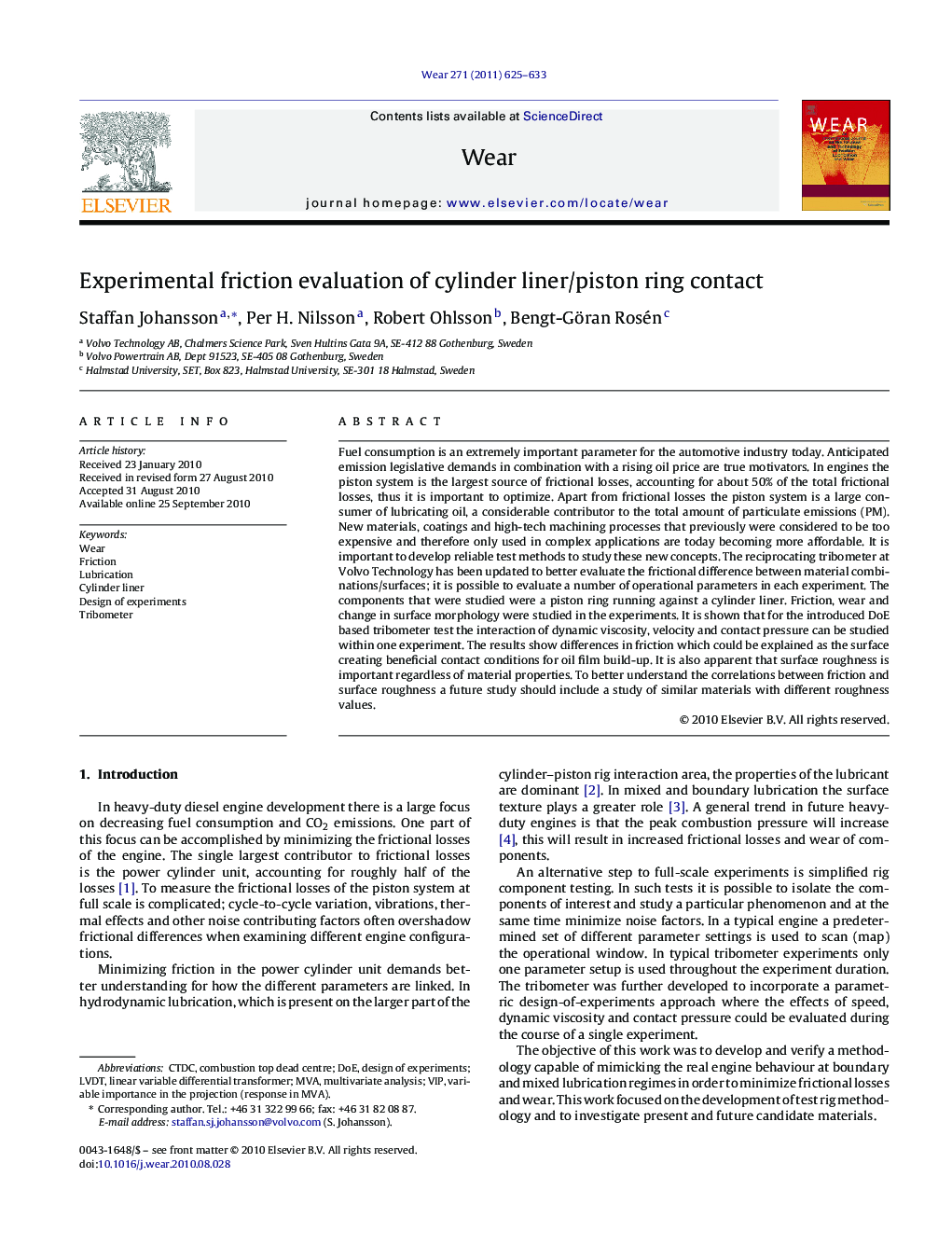| Article ID | Journal | Published Year | Pages | File Type |
|---|---|---|---|---|
| 618119 | Wear | 2011 | 9 Pages |
Fuel consumption is an extremely important parameter for the automotive industry today. Anticipated emission legislative demands in combination with a rising oil price are true motivators. In engines the piston system is the largest source of frictional losses, accounting for about 50% of the total frictional losses, thus it is important to optimize. Apart from frictional losses the piston system is a large consumer of lubricating oil, a considerable contributor to the total amount of particulate emissions (PM). New materials, coatings and high-tech machining processes that previously were considered to be too expensive and therefore only used in complex applications are today becoming more affordable. It is important to develop reliable test methods to study these new concepts. The reciprocating tribometer at Volvo Technology has been updated to better evaluate the frictional difference between material combinations/surfaces; it is possible to evaluate a number of operational parameters in each experiment. The components that were studied were a piston ring running against a cylinder liner. Friction, wear and change in surface morphology were studied in the experiments. It is shown that for the introduced DoE based tribometer test the interaction of dynamic viscosity, velocity and contact pressure can be studied within one experiment. The results show differences in friction which could be explained as the surface creating beneficial contact conditions for oil film build-up. It is also apparent that surface roughness is important regardless of material properties. To better understand the correlations between friction and surface roughness a future study should include a study of similar materials with different roughness values.
Research highlights▶ Concerning piston ring friction surface roughness is important regardless of material. ▶ A smooth plateau part of the surface is favourable for low friction at low speeds. ▶ DoE tribometer setups make it possible to study many parameters with few experiments.
